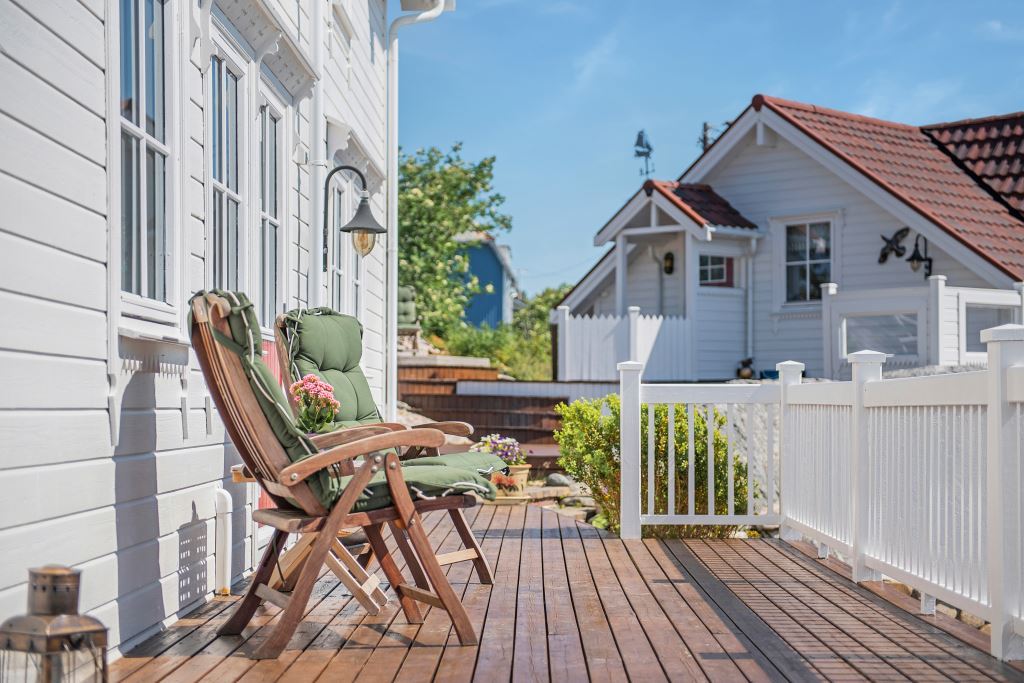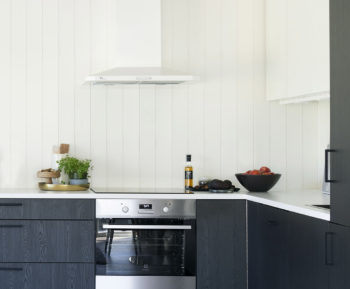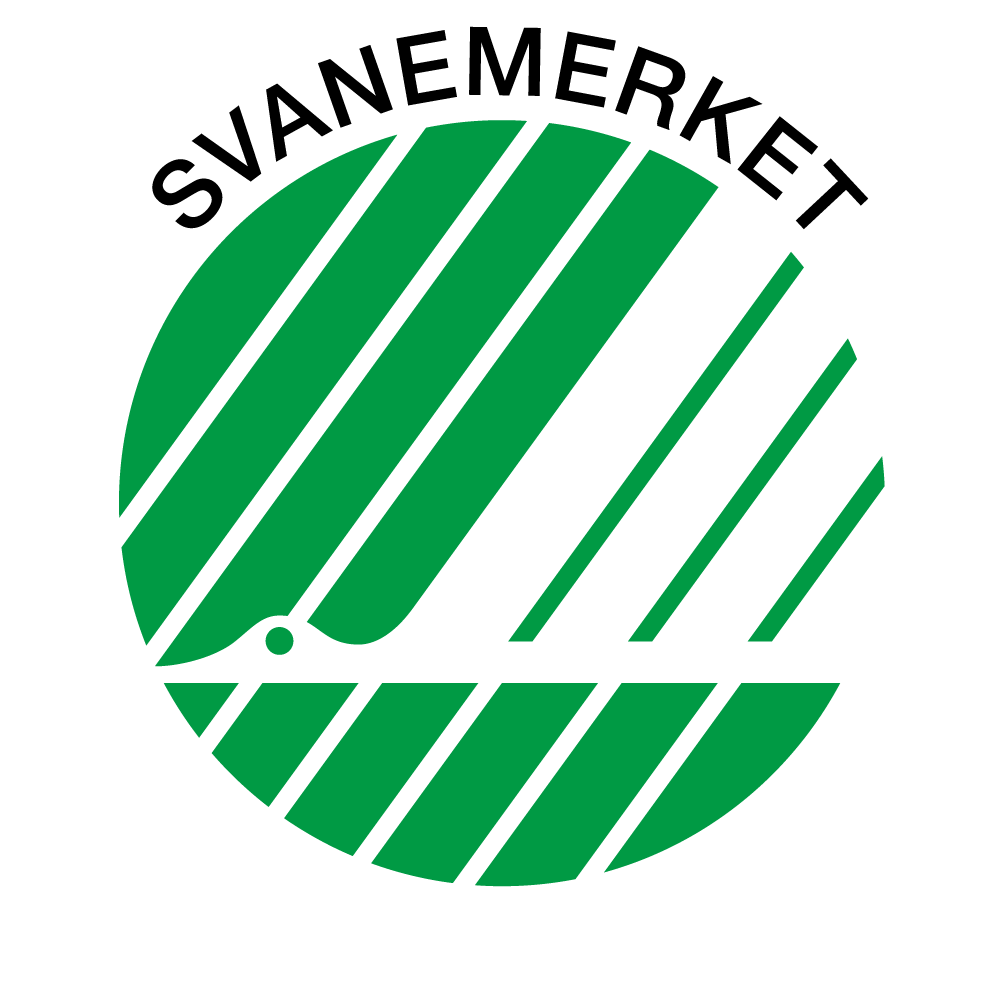If the house wall is worn, flaky and sad, it may be high time to flip through color maps, check the weather forecast, and set aside time for a much-needed renewal. Before dipping the brush in the paint bucket, there are three things you need to take care of:
– The surface must be clean, firm and dry. It is alpha omega when you are going to paint or stain, says Eirik Larsen in Gjøco.
Fortunately, it is as simple as said and done, and we let Larsen explain:
- Clean
– Use Gjøco Kraftvask which dissolves dirt, grime and black fungus, at the same time as it dulls the paint that is on the wall from before. This means that the new paint fits better. Then apply Gjøco Mushroom & Vegetable Remover immediately after washing for the best foundation, this should not be rinsed off.
- Firm
– What does not sit properly must be removed. Use a scraper to get rid of loose paint and stain, and find a wire brush for wood to brush over gray wood so that it is fresh and nice.
- Dry
– The main rule is that you can prime, stain or paint when the wood has a humidity below 15%, this you can quickly measure with a moisture meter for wood. A primed, stained or previously painted cladding normally needs three to four rain-free days with summer temperature after washing, before it is ready for further treatment. This also applies to new wood that is not pressure impregnated. New pressure-impregnated wood should normally dry for 3-8 weeks before it can be treated.
Paint or stain?
Your wall is clean, firm and dry, and longs to be painted. Or stained? Yes, which product should you really choose?
– It all depends on which expression you want. With an oil stain, you see the wood with a unique play of colors through. An ordinary cover stain shows the wood structure at the same time as it has a solid color. Ordinary paint completely covers the wood and provides the longest maintenance intervals. This is taste and pleasure, we have products adapted to most needs, says Larsen.
The exception is if you have a wall that has been painted before:
Stain can not be placed on top of paint or topcoat. If you already have paint, you must continue with paint, and if you have used topcoat, you can choose to continue with topcoat or paint. Fortunately, there is a sea of exciting colors to choose from, says Eirik Larsen.
Primer or not?
If you use paint or stain, it is especially important that you prime bare wood before applying it.
– Normally it lasts to prime “wounds” that are down to bare wood, ie places where the old treatment is completely gone. A good piece of advice might be to stain the “wounds” with the chosen paint or topcoat in the places that are now primed and dry, before you paint or stain the entire wall with two coats. Then the result will be smoother, says Eirik Larsen.
- Tips! Do you have old clothing that has been exposed to linseed oil, tar or fish oil? Contact a local specialist retailer for advice on how to treat the wall.
– It is also a great advantage to use primer under stain on untreated wood for the best protection, even if you do not “have to”. In these cases, Gjøco Oil Primer is used in a clear version, Larsen explains.
Good planning is the key
– Painting and staining is not difficult. A good result is mainly about planning and taking the time to do a good groundwork, says Eirik Larsen. Two things are extra important for the actual paint job:
- Examine in advance what equipment you need along the way, so you avoid unnecessary breaks in the paint.
- Use quality tools! The durability of paints and stains is calculated on the basis of a certain thickness of the paint film and a nice result. By using high quality brushes and rollers, you ensure that the right amount of stain or paint is applied to the surface.
– Remember to cover in advance, and work holistically. This means that you should finish the entire length of the tables, perhaps a couple of tables at a time, before moving on to the next field, says Eirik Larsen.
The professional tips that ensure perfect results
Larsen recommends using aids as an extension shaft to make demanding jobs less laborious, in addition he reminds of a typical challenge:
– The Norwegian summers are not 100 percent reliable, so check the weather forecast before you pop the paint lid. Oil-based stains and paints can generally be applied from zero degrees on the substrate, but you should wait with water-thinned varieties until the temperature approaches 10 degrees. You also depend on it being dry for a while after you have painted. A paint like Herregård Arctic Protection can withstand rain after an hour at 23 degrees, others need more time, he explains.
Maybe you dream of getting color on your back at the same time as the wall gets new color? You may want to take one thing at a time:
– The smartest thing is actually to paint “after the sun”. This avoids the disadvantage of exposing the paint to direct sunlight and high heat that can cause sun blisters, says Eirik Larsen and ends with some tips on the eternal dilemma: Roll or brush?
– For most types of paint and topcoats, it is a good idea to apply with a roller – and finish with a brush. The roller ensures efficiency, the brush ensures that the surface is smooth and pretty. If you have chosen oil stain, it is usually the brush that applies to get an even and nice result.
Product tips! Herregård Arctic Protection is Gjøco’s best and most expensive hybrid paint ever:
- 16-year guarantee on color and gloss
- Extreme protection against harsh Nordic climates
- Self-cleaning properties against dirt, grime, black fungus and fouling.
- Rainproof after one hour at 23 degrees and 50% RH.








